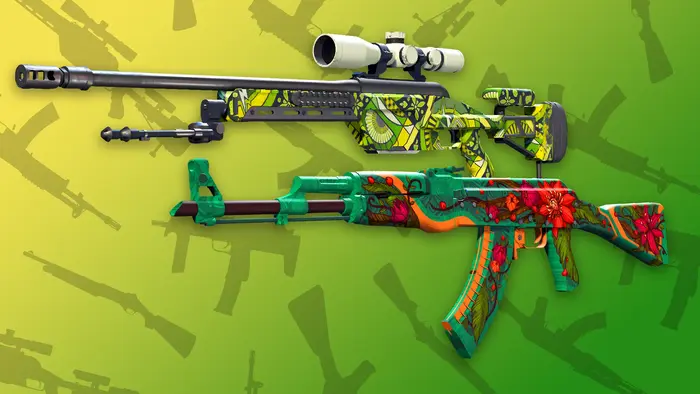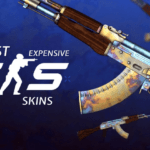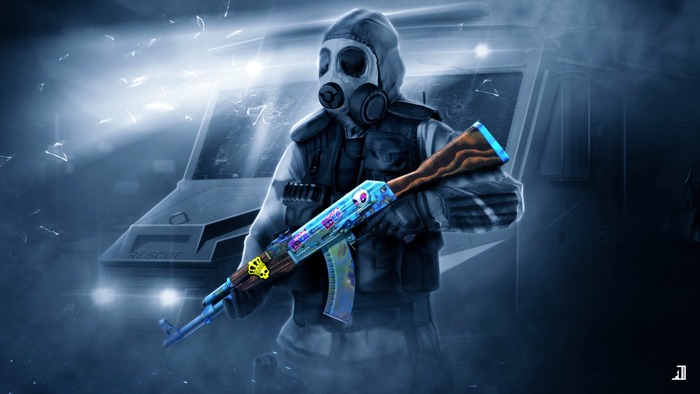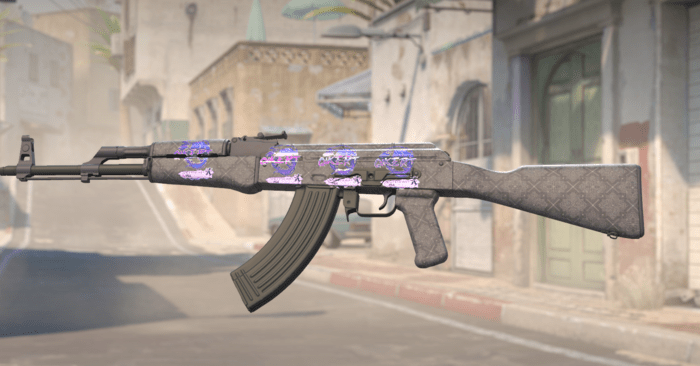What is skin exchange and how does it work?
Published on :
- PS4
- PS5
- XBox One
- Series X
- PC
Counter-Strike 2 features a dynamic in-game economy centered around skins—cosmetic items that enhance the visual appeal of weapons without affecting gameplay. A significant component of this economy is skin exchange, which enables players to trade, buy and sell these skins.
This system not only adds a layer of personalization to the game but also offers opportunities for players to profit from their virtual inventories.
Skin exchange in CS2 is facilitated through various platforms, including the Steam Community Market and several third-party marketplaces. Players can list their skins for sale, set desired prices and browse through available listings.

The value of skins is influenced by factors such as rarity, condition and unique patterns. Special categories like StatTrak and Souvenir skins provide additional layers of desirability and uniqueness.
Understanding the mechanics of skin exchange is crucial for any CS2 player aiming to optimize their gaming experience. Here we explore the intricacies of skin exchange, detailing how it works, the platforms involved and strategies for maximizing trades and sales.
Whether you are an experienced trader or new to the CS2 skin market, this guide will equip you with the knowledge needed to navigate this fascinating aspect of the game effectively.
Trading CS2 skins
Trading skins in CS2 is a key element of the gaming experience, enabling players to personalize their weapons and equipment while participating in a lively in-game economy. Players can trade skins through platforms like the Steam Community Market and third-parties.
These platforms ensure secure and fair transactions, allowing players to list, buy and sell skins with confidence.
The value of CS2 skins is determined by various factors, including rarity, float value and unique patterns. Special categories like StatTrak and Souvenir skins add extra layers of uniqueness and desirability, often commanding higher prices.
Float values, which range from Factory New to Battle-Scarred, significantly affect the skin’s appearance and market value, with Factory New skins being the most pristine and valuable.
Successful trading requires an understanding of market trends and effective pricing strategies. Players frequently use resources like Steam Community Market to research current prices and demand for specific skins.
Security is crucial when trading skins. Players should enable Steam Guard and two-factor authentication (2FA) to protect their accounts from unauthorized access. Being vigilant against scams and only trading with reputable users or platforms can prevent potential losses.
Trading CS2 skins not only allows players to enhance their in-game appearance but also provides opportunities for profit. By staying informed and cautious, players can effectively navigate the skin trading market and enjoy its benefits.
Selling CS2 skins
Selling CS2 skins is a key element of the game’s vibrant culture, providing players a way to monetize their virtual assets. These skins, which serve as cosmetic enhancements for weapons and gear, can have a wide range of values determined by their rarity, condition and the current market demand.
Players commonly sell their skins using platforms like the Steam Community Market or various third-party websites known for their secure transaction processes.
To successfully sell skins, players should thoroughly assess their inventory and decide which items are marketable based on the latest market trends.
It’s crucial to set competitive yet profitable prices by considering historical price trends and the rarity of the skins. Premium, rare skins often command higher prices and can significantly boost a player’s earnings.
Security is critical in the sale of skins. It’s recommended to use trustworthy platforms that safeguard transactions with robust security measures like secure payment processing and guaranteed good transfer.
These platforms often feature user ratings, helping sellers establish and maintain a credible reputation within the community.
Besides outright sales, players might also participate in auctions or swaps, trading skins for other items or in-game currency. Selling skins not only generates revenue but also deepens player involvement with the expansive CS2 community, fostering a dynamic economy that transcends the game itself.
This active marketplace sustains a continuous interest in skin collection and trade, making it an integral part of the CS2 gaming experience.

How to Sell Your CS2 Skins Quickly
To swiftly sell your CS2 skins, adopting a few strategic approaches can significantly enhance your visibility to potential buyers and speed up the process. Here is how to streamline your sales effectively:
Understand the Market: Familiarize yourself with the current demand for different skins. Skins that are popular, rare or tied to specific events tend to sell faster.
Choose Trusted Platforms: Opt for well-established platforms like the Steam Community Market or reliable third-party sites known for their large user base and security measures, which help facilitate quicker transactions.
Enhance Your Listings: Craft clear and concise listings complemented by high-quality images and detailed descriptions. Emphasize any unique attributes of the skin, such as its rarity or distinct visual features.
Promote Actively: Boost the reach of your listings by sharing them on social media or CS2-specific gaming forums and communities, broadening your potential buyer base.
Bundle Offers: Group together multiple skins at a reduced price. This strategy can appeal to buyers looking for value deals and can expedite the sale of more items at once.
Stay Engaged: Respond promptly to any queries or offers. Being proactive and communicative can facilitate faster deals and enhance your reputation as a seller.
Ensure Transaction Security: Conduct the sale securely and efficiently. Stick to secure payment methods endorsed by the trading platform and adhere to all transactional guidelines to guarantee a smooth process.
Gather Feedback: Post-sale, solicit and review buyer feedback to refine your future sales strategies. Positive feedback not only boosts your credibility but can also attract more buyers.
Conclusion
Exploring the realm of CS2 skin trading presents players with an enticing chance to tailor their gaming journey and potentially reap rewards. The skin exchange infrastructure, facilitated through platforms like the Steam Community Market and third-party marketplaces, offers a secure and user-friendly space for skin transactions.
With a grasp of the factors influencing skin worth and employing effective trading tactics, players can optimize their earnings and actively engage in the game’s lively in-game economy.
Nevertheless, prioritizing security measures, such as activating Steam Guard and exercising vigilance against scams, is imperative to ensure transaction safety and uphold account security. Skin trading in CS2 not only adds depth to gameplay but also cultivates a dynamic community-driven economy, enhancing the gaming experience for players worldwide.






